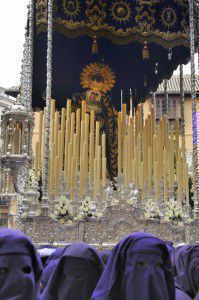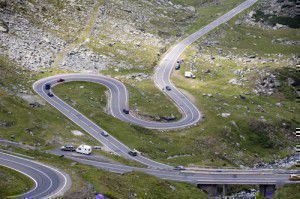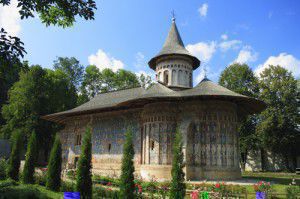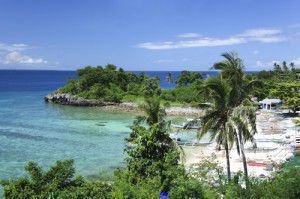Which language are you learning? (Win an iPad mini!)
**** The survey is now closed. Thank you so much to everyone who took part. Congratulations to our lucky winner, Konstantia Sakellariou! ****
 Calling all language learners, past, present and future! We want to hear from you… Which language(s) are you learning (or would like to learn), and why? What makes people give up? And how important is it to learn a little of the local language before you travel to another country?
Calling all language learners, past, present and future! We want to hear from you… Which language(s) are you learning (or would like to learn), and why? What makes people give up? And how important is it to learn a little of the local language before you travel to another country?
We’d love to hear from you; the survey only takes a couple of minutes to fill in (we’ve checked) and to say thank you, we’ll enter you into a prize draw to win an iPad mini, pre-installed with our app, uTalk, in the language of your choice.
This is a two-part research project. Part 2 will be available soon and we’ll let you know when it’s ready.
Thanks for your time
And please share the link with friends and colleagues too – thank you!
Easter celebrations around the world
Here in the UK, this weekend is Easter weekend. Many people will be marking the occasion by attending church services on Good Friday and Easter Sunday, while a more commercial tradition is to exchange chocolate eggs as gifts. Easter is a religious holiday, marking for many people around the world the death and resurrection of Jesus, but it also represents new life, falling as it does in spring time, and is often symbolised by young animals, like lambs and chicks.
We decided to have a look at some Easter traditions around the world, to see how other countries mark this holiday. Here are just a few:
Brazil
Mardi Gras (which means ‘Fat Tuesday’) takes place in Rio de Janeiro on Shrove Tuesday and marks the start of Lent. The streets are filled with large processions of people in brightly coloured, exotic costumes, marching, singing and dancing.
Another Brazilian tradition is to create straw dolls to represent Judas Iscariot, then destroy them in the street.
France
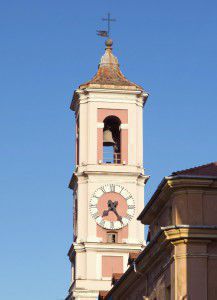 Church bells are silent as a sign of mourning from Maundy Thursday until Easter Sunday. Sometimes children are told the bells (known as ‘cloches volants’ or ‘flying bells’) have gone to see the Pope and will return with Easter eggs.
Church bells are silent as a sign of mourning from Maundy Thursday until Easter Sunday. Sometimes children are told the bells (known as ‘cloches volants’ or ‘flying bells’) have gone to see the Pope and will return with Easter eggs.
In parts of southwest France, a giant omelette is made on Easter Monday. The dish can feed 1,000 people.
Ethiopia
During Lent in Ethiopia, Christians don’t eat or buy any animal products like meat, eggs, butter, milk, yogurt, cream and cheese.
The first Easter day service starts at 8 p.m. on Easter Saturday and lasts until 3 a.m. on Easter Sunday.
After the service, people will return to their homes and have a breakfast of ‘dabo’ sourdough bread to celebrate the end of Lent. Traditionally, the bread is cut by a priest or the head man in the family.
Czech Republic and Slovakia
As part of an Easter tradition, women and girls are beaten with decorated hand made whips on Easter Sunday. But despite what you might think, this is actually a good thing; the whipping is thought to make women more healthy and beautiful, and girls who don’t get whipped are often quite offended!
Chios (Greek Island)
In the village of Vrondados, the annual ‘war of rockets’ is staged between two churches, Agios Marcos and Erithiani. Residents spend all year preparing thousands of firework rockets and on the evening of Easter Saturday, the rockets are fired between the two churches for hours.
The custom goes back many years, and although there are plenty of stories, no one is quite sure how the tradition began.
Spain
Many towns and cities in Spain celebrate Semana Santa (Holy Week) with processions through the streets at night. Floats called ‘tronos’ are carried through the streets. Each float bears huge decorated figures representing part of the Easter story. It takes 40-50 people to carry each trono on their shoulders and processions can last between 4-5 hours.
In Murcia, a trono telling the story of the Last Supper has real food on the table. On Easter Sunday, the 26 men who have carried the table in the procession sit down and eat the food.
Please share your own Easter traditions in the comments. And whether you celebrate Easter or not, we hope you have a great weekend.
Seb
10 reasons to visit… Romania
As you know, we love travelling and learning about all kinds of cultures around the world, so we decided to start the ’10 reasons’ series – every now and then we’re going to give you 10 reasons for which you should consider visiting a new country.
This month I chose Romania because it is my home country and because I can think of a lot more than ten reasons to visit this beautiful country. So, enjoy your read and please note that the reasons are not stated in any particular order – all are equally important.
1. Breathtaking mountain landscapes
Romania is one of the ‘lucky’ countries which gets to enjoy both mountains and sea, but the truly amazing landscapes are definitely to be seen in the Carpathian mountains. There are two main roads that traverse the mountain chain and they are Transalpina and Transfagarasan. These roads reach the altitude of 2042 metres (6700 ft) and take you through endless curves and sheer drops – make sure you pull over to take photos.
2. Transylvania
This might be the best known area in Romania, mainly because of the Dracula myth that is supposed to have taken place here. I’m not going to tell you about how you can have vampire encounters (Dracula is as real as Edward Cullen so don’t get your hopes up), instead I’m going to tell you that this is a very special part of Romania, having many colourful medieval cities with beautiful architecture as well as friendly people and delicious food – but more about this in the following points.
3. Black Sea resorts and summer fun
My hometown is on the Black Sea shore and I can promise you, it is like Ibiza down there. There are parties almost every day of the week during the summer but the weekend is when it gets really loud and fun. Most Romanians go there for a couple of weekends during the summer for festivals and other party-related events. You can even go on your own, you will make a lot of friends. During the day, you can lay on the beach and get a nice tan to show off when you go back.
4. Finger-licking food
If you decide to take a trip to Romania, make sure you are ready to come back home with 5-10 pounds extra, as the food over there is delicious – from the national food cabbage rolls (or stuffed cabbage) with porridge made out of yellow maize flour, to any kind of pies and cocoa sponge cake to Turkish influenced cuisine, everything you will eat there will taste amazing! On top of that, most Romanian women are really good cooks.
5. Ski- and winter-resorts
Now, I’m not much of a skier but I can tell you that you can have a great time skiing or snowboarding in the winter in the Romanian mountain resorts. The best known area for this is Prahova Valley, which is basically a river making its way thorough the chain of mountains and there are about 7-8 small resorts where you can get your share of winter fun, winter landscapes and mulled wine (what, did you think there’s no alcohol involved?).
6. The Danube Delta
If you’re more the nature-loving/sleeping-in-a-tent-is-fun kind of person you might want to take a trip here. This place is a naturally formed delta, where the Danube flows into the Black Sea. It is known for its wild places because it is pretty difficult to live there all year round given all the water and muddy islands. There are some men-built resorts where you can stay if you don’t enjoy the wilderness that much but the true sense of this place is that you can have that bonding-with-nature kind of experience.
7. The beautiful girls
Don’t get me wrong, this is not a ‘place’ you can visit, they don’t have them all lined up behind a window (although, you can find that in Amsterdam – so I’ve heard). It’s just that Romanian women are known to be beautiful and that is mostly because they take much interest in their appearance and they enjoy going out in cafés, pubs or clubs – so that makes them something you might want to experience seeing in Romania.
8. Bucharest nightlife
Speaking of clubs, this brings me to the capital of Romania – Bucharest. This big city has a vivid nightlife and fancy, luxurious clubs with music that plays till the sunrise. The custom is that you go to a club where you party & drink til 5-6 a.m. and then you go and have some Turkish kebab or shaworma (a kind of wrap) as a hangover cure. The place where you can find most of the clubs is the Old City Centre, which is very beautiful to visit during the day as well.
9. Northern Moldavia
If you are more the museum-visiting type, this area is one that you would enjoy. There are a lot of old monasteries (some date from the 14th-16th century) where nuns and monks still live nowadays and that are part of the UNESCO world heritage because they are represent the Romanian tradition. They are usually surrounded with vegetation so that can be a place to find peace and serenity even if you are not religious. Be careful of the dress code – you have to wear trousers (or a long skirt) and something rather decent for the top part.
10. The people
I’ve saved the best for last. One important reason you should visit Romania is to find that the people there are welcoming and warm, that you can make long lasting friendships very quickly and that even though Romania is a country that has had many struggles in the past, people are still good at heart and they will welcome you in their house as a friend, not a tourist.
And of course before you go, don’t forget to learn some Romanian, and take uTalk with you in case you get stuck while you’re there…
If you have any suggestions for our next ’10 reasons to visit…’ post, please let us know!
Ioana
10 of the world’s most amazing places
One of our top tips for learning a language is to take a holiday – it not only gives you a chance to practise your new language with the locals but you also get to visit somewhere nice. And why not take the opportunity to visit some of the world’s most amazing (if sometimes slightly bizarre) places while you’re at it?
1. San Alfonso del Mar
Like the world’s largest swimming pool, for instance, which is at San Alfonso del Mar in Chile. If you’re thinking of swimming lengths, you might want to stock up on energy drinks before diving in to this one. It’s more than 1,013 metres long, so paddlers should beware! It also has a 35-metre deep end – not for the unwary swimmer. The Guinness Book of Records named this pool as the biggest in the world, needing 66 million gallons of water to fill it up.
2. Mt HuaShan
Or maybe you’d like to visit a traditional Chinese tea house. What about this one, at the top of Mt. HuaShan? It’s 2,160 metres high and the path to get there is nothing short of terrifying. It’s thought that there may be as many as 100 fatal falls a year, and yet the trail is popular with tourists, keen to visit the teahouse, on the southern summit of the mountain, which used to be a Taoist temple, or the chess pavilion on the east peak.
3. Stewart Island
If bird-watching is your thing, you could visit Stewart Island in New Zealand. It’s one of the most remote destinations in the world, with only one town, Halfmoon Bay (also known as Oban) and an estimated population of just 450 people. The island is the only place to see the Kiwi bird in its natural habitat and is also home to five species of penguin.
4. Pink Lake
Next door in Australia, Pink Lake, just west of Esperance, is worth a visit. As its name would suggest, in certain weather conditions the water in the lake is pink, thanks to a particular kind of algae in the water. And this isn’t the only pink lake in the area. Lake Hillier, on Middle Island, is another example and an even brighter colour.
5. Joffre Lakes
However, if you prefer your lakes blue, the Canadian park of Joffre Lakes in British Columbia comes highly recommended. The lakes are a more traditional, but stunningly beautiful, turquoise blue and surrounded by peaks and glaciers. A trip to Joffre Lakes isn’t complete without an overnight stay, where you can camp under the stars and listen to the ice calving from the glacier.
6. Kizhi
The Russian island of Kizhi is found almost exactly at the centre of Lake Onega and boasts a spectacular wooden church, the Church of the Transfiguration, which was built in the 18th century without a single nail. Legend says that the lead builder used just one axe for the whole building, and then threw it in the lake when the church was completed, saying, ‘There was not and will not be another one to match it.’
7. Kayaköy
Just a few miles from the popular resort of Fethiye in southwestern Turkey, on the side of a mountain, is the village of Kayaköy. Greek-speaking Christians lived there until the 1920s but the village was abandoned follow a population exchange agreement between Turkey and Greece in 1923. Now a museum and historical monument, Kayaköy is a beautiful but rather eerie ghost town.
8. Capuchin monastery
Speaking of eerie, the Capuchin monastery in Sicily is home to 8,000 mummified corpses in the monastery catacombs. The bodies are all dressed in their best clothes and arranged in different rooms according to the type of person. The oldest in the collection dates from 1599, while the most recent addition is the body of Rosalia Lomabardo, who was embalmed in 1920 and is known as ‘Sleeping Beauty’.
9. ICEHOTEL
If you’re looking for somewhere a bit different to stay, you could try the ICEHOTEL in Jukkasjärvi, Sweden. Made with ice from the Torne River, the hotel offers ice and snow rooms, and runs a survival course every night for new guests on what to wear and how to cope when sleeping in temperatures below zero. But don’t worry – warm rooms are also available if you’re not a fan of the cold.
10. Malapascua
One extreme to the other – the island of Malapascua in the Phillippines boasts beautiful beaches and is most popular with divers, as it’s the only place in the world to see the pelagic thresher shark. There’s no transport on the island because it’s small enough to walk everywhere, and the only way to arrive on the island is by banca (a local boat ferry).
We hope that’s given you a few ideas for your next holiday. Don’t forget to learn a few words in the local language before you leave! And if we missed your favourite place, let us know in the comments…
Business or pleasure – it makes no difference
In an earlier post, I talked about the importance of learning a little bit of the local language before visiting another country. Not only is it the respectful thing to do, it also saves you from embarrassing misunderstandings or spending your entire holiday communicating through pointing and exaggerated mimes.
A few years ago, I visited Lithuania for a weekend. It was for a one-off sporting event and was therefore likely to be my first and last time in the country. I didn’t need to become fluent in Lithuanian, but thought I should make an effort (particularly given where I work!) so I spent a bit of time using Talk Now before I left, learning the words for ‘yes’, ‘no’, ‘hello’, ‘thank you’, ‘hotel’, and a few others. This allowed me to greet people, explain to taxi drivers where I wanted to go, and thank the staff in restaurants and shops in their own language. It wasn’t a lot, and there was still some pointing and gesturing required, but I felt better about myself and the locals seemed to appreciate my efforts.
I recently learned the story of how the idea for EuroTalk came about. One of our founders, Dick Howeson, was on a business trip in Hungary, waiting for a flight. He desperately needed to use the bathroom, but unfortunately, instead of pictures, the airport had used the words for ‘male’ and ‘female’ on the doors. This was a small problem for Dick, who didn’t speak any Hungarian, and had no way of knowing which was which. Unluckily, the airport wasn’t very busy at the time, and he had to wait twenty minutes for someone else to come along, so he could see which door they used.
 At the time, a lot of people had been asking Dick for a language program specifically for business people, but his experience in Hungary made him realise that those travelling for work needed to start with the basics just like everyone else, rather than going straight to learning the words for ‘invoice’ or ‘contract’. That’s why EuroTalk software starts by teaching you the essential first words you need to get by – including ladies’ and gents’ toilet!
At the time, a lot of people had been asking Dick for a language program specifically for business people, but his experience in Hungary made him realise that those travelling for work needed to start with the basics just like everyone else, rather than going straight to learning the words for ‘invoice’ or ‘contract’. That’s why EuroTalk software starts by teaching you the essential first words you need to get by – including ladies’ and gents’ toilet!
Our newest iPhone app, uTalk, is based on exactly the same thinking. It’s free to download and gives you 15 words in 25 languages (with lots more on the way). And not only that, it also contains all the EuroTalk games you know and love, plus some new ones, to help you remember them. If you decide you want to learn more, there are upgrades available to unlock loads more vocabulary.
So if you’re planning your summer holiday – or a business trip – now is the perfect time to download uTalk, and wherever you go, you’ll be prepared.
Liz


